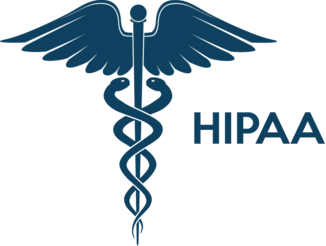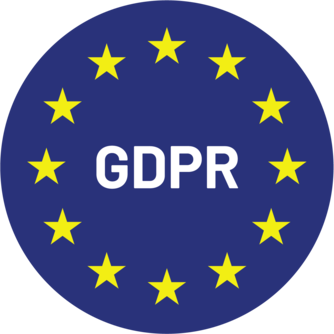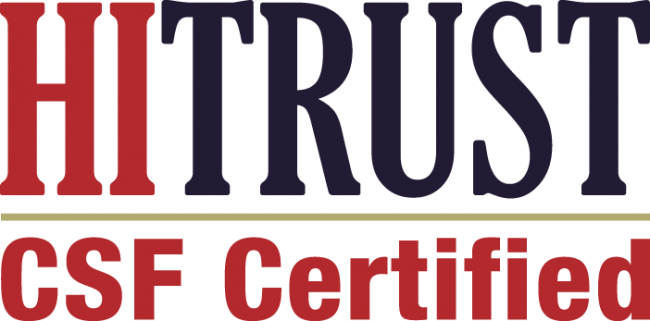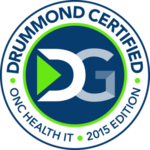Chronic diseases affect more than 6 in 10 adults in the United States, accounting for the leading causes of death and disability nationwide. From diabetes and heart disease to COPD and hypertension, these conditions require continuous monitoring, medication adherence, and lifestyle management that can be overwhelming for patients to navigate alone. However, Remote Patient Monitoring (RPM) technology is revolutionizing how Americans manage their chronic conditions, offering unprecedented control, convenience, and clinical outcomes.
The Chronic Disease Challenge in America
The statistics are staggering: chronic diseases are responsible for 7 out of 10 deaths in the U.S. and account for 90% of the nation’s $4.1 trillion in annual healthcare expenditures. Traditional healthcare models, built around episodic care and periodic office visits, often fall short in providing the continuous support that chronic disease management requires.
Patients frequently struggle with:
- Inconsistent monitoring between appointments
- Medication adherence challenges
- Delayed detection of health deterioration
- Limited access to healthcare providers
- High costs of frequent office visits
- Lack of real-time feedback on their health status
This is where Remote Patient Monitoring emerges as a game-changer, transforming the healthcare landscape by bringing continuous care directly into patients’ homes.
What is Remote Patient Monitoring (RPM)?
Remote Patient Monitoring is a healthcare delivery method that uses digital technologies to collect medical and health data from patients in one location and electronically transmit this information to healthcare providers for assessment and recommendations. RPM devices can track vital signs, medication adherence, activity levels, and other health metrics in real-time, enabling proactive interventions and personalized care management.
The technology encompasses various devices and platforms, including:
- Blood pressure monitors
- Glucometers for diabetes management
- Pulse oximeters
- Weight scales
- ECG monitors
- Medication adherence tracking systems
- Mobile health applications
- Wearable devices
How RPM Empowers Patients with Chronic Conditions
1. Real-Time Health Monitoring and Feedback
RPM enables patients to monitor their health continuously rather than relying solely on periodic clinical visits. For diabetes patients, continuous glucose monitoring provides real-time insights into blood sugar levels, helping them make immediate dietary and medication adjustments. Similarly, patients with heart conditions can track their blood pressure and heart rate, receiving instant alerts when readings fall outside normal ranges.
This continuous monitoring empowers patients to:
- Make informed decisions about their daily activities
- Recognize early warning signs of health deterioration
- Adjust medications and lifestyle choices based on real-time data
- Develop a deeper understanding of how their actions affect their health
2. Enhanced Medication Adherence
Poor medication adherence is a significant challenge in chronic disease management, with studies showing that only 50% of patients take their medications as prescribed. RPM platforms incorporate smart pillboxes, medication reminder apps, and adherence tracking systems that help patients stay on track with their treatment regimens.
These tools provide:
- Automated medication reminders
- Tracking of medication intake
- Alerts for missed doses
- Integration with healthcare provider systems for monitoring compliance
3. Personalized Care Plans and Interventions
RPM platforms collect vast amounts of patient data, enabling healthcare providers to create highly personalized care plans. Machine learning algorithms can analyze patterns in patient data to predict potential health crises before they occur, allowing for proactive interventions.
Patients benefit from:
- Tailored treatment recommendations based on their specific health patterns
- Predictive alerts for potential health complications
- Customized educational content and lifestyle recommendations
- Adaptive care plans that evolve with changing health conditions
4. Improved Access to Healthcare
RPM breaks down geographical barriers and reduces the need for frequent in-person visits, making healthcare more accessible to patients in rural areas, those with mobility limitations, or individuals with busy schedules. Patients can receive high-quality care from the comfort of their homes while maintaining regular contact with their healthcare providers.
5. Cost-Effective Care Management
By enabling early detection of health issues and reducing the need for emergency interventions, RPM significantly reduces healthcare costs. Patients can avoid expensive emergency room visits, hospitalizations, and complications that arise from poorly managed chronic conditions.
Medicare RPM Program: Supporting American Patients
Recognizing the transformative potential of RPM, Medicare has established comprehensive reimbursement programs that make this technology accessible to millions of American patients. The Medicare RPM program has evolved significantly, with important updates for 2024 and 2025.
Current Medicare RPM Reimbursement Structure
Medicare provides specific reimbursement for RPM services, with the 2025 CPT codes including $19.73 for initial patient enrollment and device setup (99453), along with additional codes for device supply, data collection, and clinical monitoring services.
Key Medicare RPM Requirements and Updates
The most notable update for RPM reimbursement in 2025 is expanded usage, allowing providers to monitor a broader set of conditions, including chronic and acute conditions in different settings. This expansion significantly increases the number of patients who can benefit from RPM services.
The Medicare final rule 2024 emphasizes that RPM services can only be furnished to “established patients,” a distinction that was reinstated after the Public Health Emergency. This requirement ensures continuity of care and proper patient-provider relationships.
Medicare RPM Billing Codes
The Medicare RPM program includes several specific billing codes:
- 99453: Initial setup and patient education on equipment (one-time fee)
- 99454: Device supply, data collection, transmission, and reporting services
- 99457: First 20 minutes of clinical staff time for RPM services
- 99458: Additional 20 minutes of clinical staff time
CMS has clarified which remote monitoring codes require at least 16 days of data collection in 30 days and which codes have no such requirement, providing clearer guidance for healthcare providers.
Impact on Patient Access
The Medicare RPM program has dramatically increased access to remote monitoring services for American patients. By providing structured reimbursement, Medicare has incentivized healthcare providers to implement RPM programs, making this technology available to millions of patients who might otherwise lack access to continuous monitoring.
HealthViewX RPM Platform: Leading the Digital Health Revolution
Among the various RPM platforms available, HealthViewX stands out as a comprehensive solution that empowers both patients and healthcare providers with cutting-edge technology and user-friendly interfaces.
Key Features of HealthViewX RPM Platform
HealthViewX’s HIPAA-compliant Chronic Care Remote Physiologic Monitoring software goes beyond data integration, empowering connected care by expanding care expertise beyond the care setting.
1. Comprehensive Data Integration
The platform features automated data collection and real-time alerts for proactive interventions, along with data-driven analytics for predictive risk stratification. This ensures that both patients and providers have access to actionable insights derived from continuous health monitoring.
2. Advanced Patient Engagement Tools
HealthViewX includes customizable patient engagement tools to improve adherence and satisfaction, ensuring that patients remain actively involved in their care management.
3. Secure Communication Features
The platform supports secure messaging, video consultations, and instant alerts, ensuring that providers can respond promptly to any changes in a patient’s condition. This continuous interaction strengthens the patient-provider relationship and fosters trust.
4. Condition-Specific Monitoring
For diabetes management, RPM typically includes continuous glucose monitoring with real-time alerts, blood pressure and weight tracking to monitor cardiovascular health, medication adherence monitoring through smart pillboxes or apps, and activity and sleep pattern tracking.
The platform includes features for medication adherence tracking, symptom assessment questionnaires, and patient education resources, enabling holistic COPD management beyond basic vital sign monitoring.
5. Billing and Compliance Support
HealthViewX provides built-in billing support for CMS RPM codes, helping practices maximize reimbursement while ensuring compliance with Medicare requirements.
Clinical Impact and Success Metrics
HealthViewX has helped deliver 5 Million plus Patient Encounters with its platform and suite of solutions that include Referral Management, Chronic Care Management, Remote Patient Monitoring, and Telehealth, demonstrating the platform’s scalability and effectiveness.
Seamless Integration
Platforms like HealthViewX make integrating RPM into existing workflows easy, ensuring compliance and maximizing reimbursements, which is crucial for healthcare practices looking to implement RPM programs without disrupting their current operations.
Real-World Impact: Patient Success Stories
RPM technology has transformed the lives of countless American patients managing chronic conditions. Consider the following scenarios:
Diabetes Management: A 65-year-old patient with Type 2 diabetes uses continuous glucose monitoring integrated with the HealthViewX platform. The system alerts both the patient and healthcare provider when blood sugar levels spike, allowing for immediate intervention. This proactive approach has reduced the patient’s HbA1c levels by 1.2% and prevented two potential emergency room visits.
Heart Failure Monitoring: A patient with congestive heart failure uses RPM devices to track weight, blood pressure, and activity levels. The platform detects subtle changes that indicate fluid retention, enabling the care team to adjust diuretic medications before symptoms worsen. This patient has experienced a 60% reduction in hospitalizations since starting RPM.
COPD Management: A chronic obstructive pulmonary disease patient uses pulse oximetry and symptom tracking through RPM. The system provides early warning signs of exacerbations, allowing for prompt treatment with bronchodilators and corticosteroids. This proactive approach has improved the patient’s quality of life and reduced the need for emergency interventions.
The Future of RPM in Chronic Disease Management
As RPM technology continues to evolve, several trends are shaping its future:
Expanded Device Integration
The Internet of Medical Things (IoMT) is growing rapidly, with new devices and sensors being developed to monitor various health parameters. Future RPM platforms will integrate with smart home technologies, wearable devices, and even smartphone sensors to provide comprehensive health monitoring.
Preventive Care Focus
RPM is shifting from reactive to preventive care, with platforms using predictive analytics to identify patients at risk of developing chronic conditions. This proactive approach could significantly reduce the burden of chronic diseases in America.
Improved Patient Experience
User interface design and patient engagement tools are becoming more sophisticated, making RPM platforms more intuitive and user-friendly. This improvement in usability is crucial for widespread adoption among older adults and patients with limited technical skills.
Overcoming Implementation Challenges
While RPM offers tremendous benefits, several challenges must be addressed for successful implementation:
Digital Literacy
Not all patients are comfortable with technology, particularly older adults who represent a significant portion of chronic disease patients. RPM platforms must provide comprehensive training and support to ensure successful adoption.
Data Security and Privacy
With the increasing amount of personal health data being collected and transmitted, robust security measures are essential. HIPAA compliance and advanced encryption technologies are critical for maintaining patient trust.
Healthcare Provider Training
Healthcare providers need proper training to effectively use RPM data and integrate it into their clinical workflows. This includes understanding how to interpret continuous monitoring data and make appropriate clinical decisions.
Insurance Coverage
While Medicare provides coverage for RPM services, private insurance coverage varies. Expanding insurance coverage for RPM services would increase accessibility for more patients.
Conclusion
Remote Patient Monitoring represents a paradigm shift in chronic disease management, empowering American patients to take control of their health like never before. By providing continuous monitoring, real-time feedback, and personalized interventions, RPM technology is improving patient outcomes while reducing healthcare costs.
The Medicare RPM program has been instrumental in making this technology accessible to millions of Americans, with recent expansions in 2025 broadening eligibility and improving reimbursement structures. Platforms like HealthViewX are leading the way with comprehensive solutions that integrate seamlessly into existing healthcare workflows while providing advanced features for both patients and providers.
As we look to the future, RPM technology will continue to evolve, offering even more sophisticated monitoring capabilities and predictive analytics. The key to success lies in ensuring that these technologies remain patient-centered, user-friendly, and accessible to all Americans, regardless of their technical expertise or geographic location.
For patients managing chronic conditions, RPM offers hope for better health outcomes, improved quality of life, and greater independence. For healthcare providers, it provides the tools necessary to deliver proactive, personalized care that can prevent complications and reduce the burden of chronic diseases on our healthcare system.
The revolution in chronic disease management is here, and RPM is at the forefront of this transformation. By embracing these technologies and ensuring their widespread adoption, we can create a healthcare system that truly empowers patients to take control of their health and live their best lives despite chronic conditions.
Ready to explore how RPM can transform your chronic disease management? Contact HealthViewX today to learn more about their comprehensive RPM platform and how it can empower you or your patients to achieve better health outcomes.



